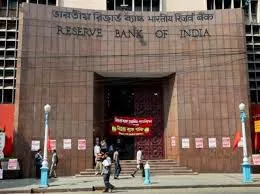True to its
tradition the Reserve Bank of India (RBI) has once again surprised the market.
Looking at the Fed rate cut by an unprecedented 75 basis points, and the
overall slowdown witnessed in industrial growth during the current year from
11.6 to 9.2% and a fall in growth in non-food credit, India Inc. anticipated a
cut in domestic interest rate by the RBI. But the RBI has left all policy rates
unchanged at its quarterly review of the Credit Policy.
The RBI has, of
course, its own reasons: it expects the GDP growth in 2007-08 to be maintained
at around 8.5% subject to no further escalation in international crude prices
and barring domestic or external shocks; economy will continue to grow at the
same rate even in FY09 despite global slowdown; and the modest deceleration in
output growth witnessed in the second and third quarters of FY08 shall be taken
care of by the ongoing investment boom as reflected in the sustained demand for
domestic and imported capital goods.
Driven by this
philosophy, the RBI stayed focused on managing inflation and liquidity risks.
According to the RBI, the growth in money supply increased by 22.4% on a
year-on-year basis, which is well above the projected trajectory of 17.0% to 17.5%
indicated in the 2007-08 Annual Policy Statement. Reserve money too increased
by 30.6% on a year-on-year basis as on January 18, 2008 as against 20%
prevalent a year ago. Thus, liquidity management has become its prime concern
so that it could contain inflation close to 5.0% in fiscal 2008, while
“conditioning expectation in the range of 4.0 to 4.5%”, so that inflation can
be maintained at around 3% as a medium-term objective.
The current
review of monetary policy categorically states that the growth drivers of
Indian economy are intact and performing well. And what, therefore, the RBI
addresses itself to is managing the price stability without it, of course,
tanking growth significantly. After all it’s the inflation that impacts
everyone, while growth is evasive for many.
There is,
however, a section of economists who opine that the interest rate differential
between the policy rates of the US Fed and the RBI may lead to increased
capital inflows into the country further worsening the liquidity overhang in
the market. Of course, the RBI Governor holds a different opinion: “US rate
changes are important but not a determining factor.” Indeed, according to him,
there are several other factors such as exchange rate expectations,
macroeconomic fundamentals, etc., that impact capital inflows and outflows. At
the same time, he avers that it is essential to offer an interest rate to the
market, which best optimizes savings and investments in the country. In such a
conundrum, the RBI Governor felt that giving more weight for the domestic
needs, rather than the overseas data, is more important for him.
As even the
Finance Minister observed—though for his own reasons—no one can say for certain whether the widening
‘interest rate differential’ leads to increase or decrease in capital
flows. But, theoretically, such ‘rate
differential’ shall lead to increased inflows of foreign capital, for investors
often rush in to encash the arbitrage gains. Nonetheless, in today’s globalized
economy where many known theories are faltering, the RBI governor may be right
in assuming that in the context of the falling dollar vis-à-vis major global
currencies such as pound sterling, euro, and yen, increased interest
differential alone may not lead to increased inflows of foreign exchange, just
as narrowed interest rate differential in the past failed to arrest increased
capital flows.
That aside, when
there are no ready-made answers for questions of this nature, it makes great
sense to stay glued to the real economy rather than the expectations of the
market. And, another noteworthy feature of current review proceedings is that
the RBI, perhaps, for the first time, does acknowledge the fact of certain
sectors of economy witnessing slowdown in growth. Against this background,
RBI’s ‘standstill’ policy will only highlight its firm commitment to manage
inflation expectations without sacrificing growth prospects. Over it, the RBI
has also made a resolve to monitor the global economy, particularly its
heightened uncertainties, and respond swiftly to the emerging situations. Such
an intention to stay glued to ground realities is sure to enable the RBI to act
readily, if turbulence in global markets threatens growth process in the
country.
Interestingly,
the RBI, while conceding that “monitory
policy per se can essentially address issues relating to aggregate demand”, has
proposed that the “associated policies in the financial sector could, to the
extent possible, take account of the evolving circumstances as reflected in the
disaggregated analysis.” As a sequel to this, it almost gave a subtle direction
to banks, which, in its opinion, are today enjoying sustained profitability as
reflected in their net interest margins, to initiate necessary changes for
enhancing credit delivery to sectors known for offering intensive employment as
the prevailing liquidity conditions in the market do call for such
entrepreneurship.
Yet, there is
dissension to RBI’s refusal to cut interest rates in certain quarters of the
economy, which, in their opinion is likely to inflict recession on the economy.
But given the uncertainties associated with the US subprime meltdown, it
certainly makes great sense for the RBI to adopt a policy of wait and watch
rather than blindly mimicking the Fed’s rate cut. And the RBI has done just
that. Bravo RBI!
(March, 2008)
(March, 2008)

No comments:
Post a Comment